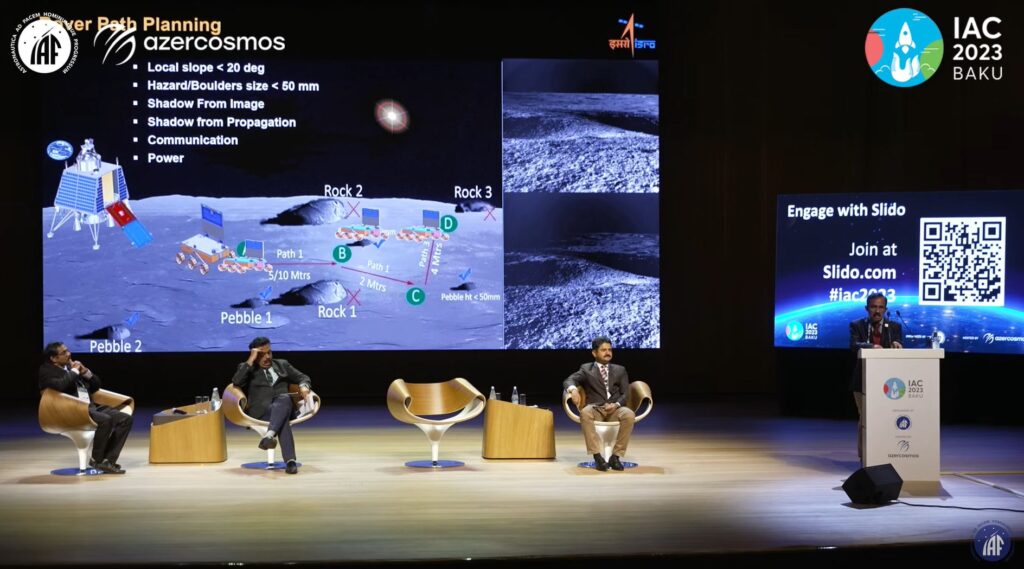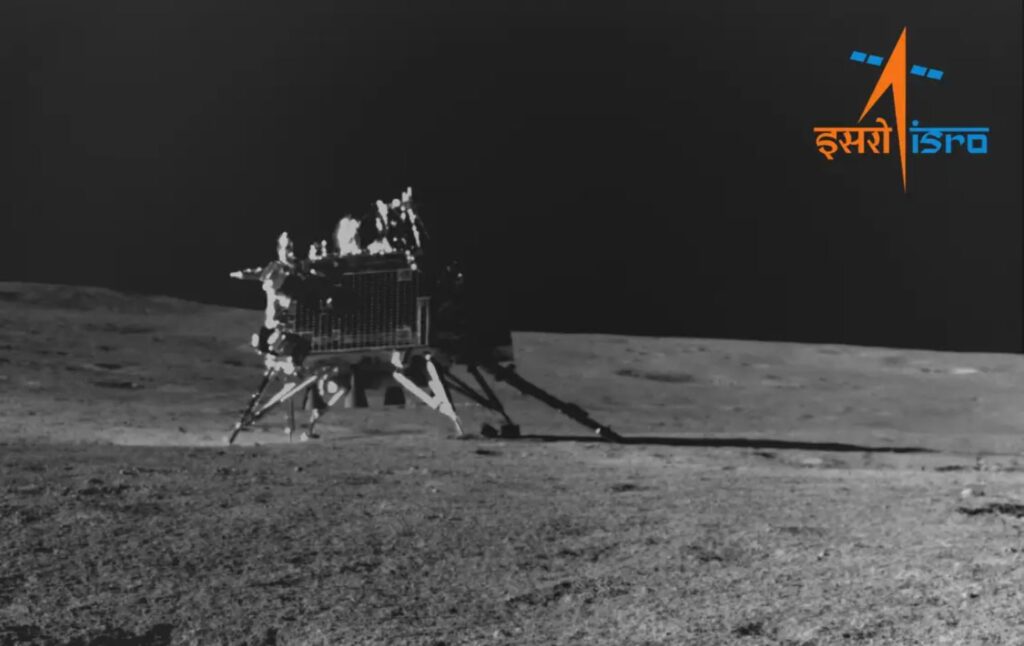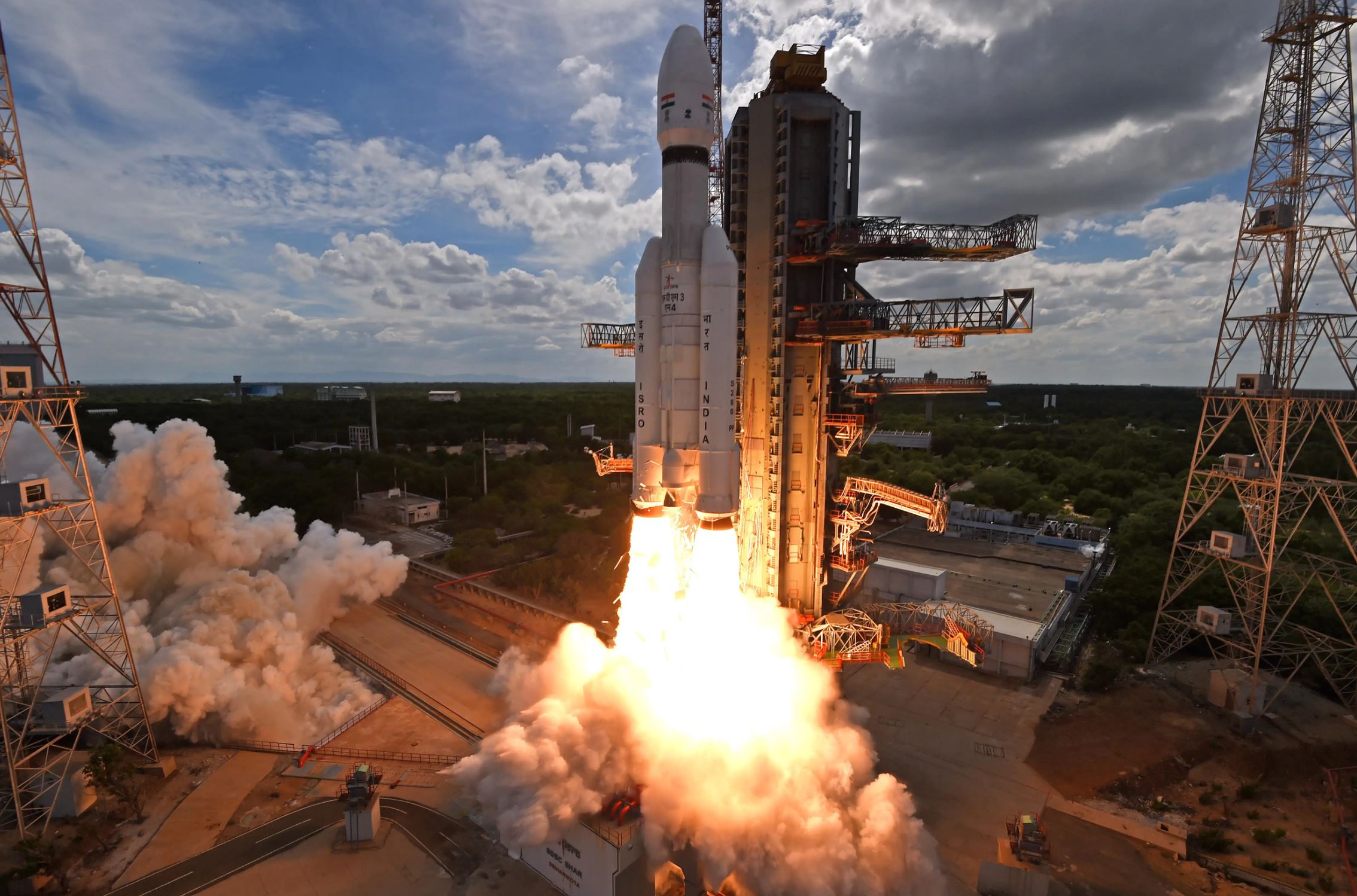BAKU, Azerbaijan — The liftoff time for India’s historic Chandrayaan-3 lunar lander was shifted four seconds to avoid close approaches to other space objects.
Chandrayaan-3 launched July 14 on a LVM-3 heavy-lift rocket from Satish Dhawan Space Centre into an initial highly-elliptical Earth orbit.
This began a circuitous journey to the moon which culminated in the lander making the highest latitude lunar landing and making India the fourth country to safely soft land on the moon.
The nominal launch time was however changed after analysis of the orbits of tracked space objects.
“Based on collision avoidance analysis the liftoff time was shifted by four seconds so that there was no collision threat,” Anil Kumar, chief general manager of safe and sustainable space operations management at the Indian Space Research Organisation (ISRO), said at the 74th International Astronautical Congress (IAC) here in Baku, Oct. 6.
“This is a mandatory practice, not only for ISRO but for all space launch vehicles. That is, before launch, the liftoff should be cleared,” Kumar said.
“The number of space objects in orbit, especially low Earth orbit, is so high. U.S. Space Force is tracking and cataloging more than 30,000 objects with a size of more than 10 centimeters.
“For this LVM-3 launch on that particular day… when we analyzed, we found that during the first orbital phase of Chandrayaan-3 many objects, including operational objects, were coming closer than one kilometer.”
This led to a shift of launch time by four seconds to avoid a number of close approaches.

Chandrayaan-3 was then successfully launched into an orbit similar to a geostationary transfer orbit. This was raised a number of times before a translunar injection burn and, after this, captured into an elliptical lunar orbit. This was then lowered to allow the spacecraft to line up its landing attempt for Aug. 23.
The details were provided at a late breaking news event at IAC. Initial science results from Chandrayaan-3’s Vikram lander and Pragyan rover data collection during their solo operational day on the moon were discussed, including the first-ever measurements of the near-surface lunar plasma environment near the lunar south pole.
Plasma levels were found to be sparse, with tens to hundreds of electrons per cubic centimeter. A detailed analysis is in progress, with potential implications for what frequencies should be used for lunar radio communications.
A propulsive “hop” performed Sept. 2 by Vikram also helped ISRO repeat science measurements in a new location, 40 centimeters from the original landing point. This included new temperature measurements from the Chandra’s Surface Thermophysical Experiment (ChaSTE) thermal conductivity and temperature payload.

The maneuver, which echoed the hop by the U.S. Surveyor 6 mission in 1967, also provided a chance to further verify accuracy and performance of the science payloads.
Scientists had hoped that solar-powered Vikram and Pragyan would reawaken in late September after sunrise following the deep cold of lunar night, despite a lack of radioisotope heater units. ISRO attempted to contact the pair but without success.
